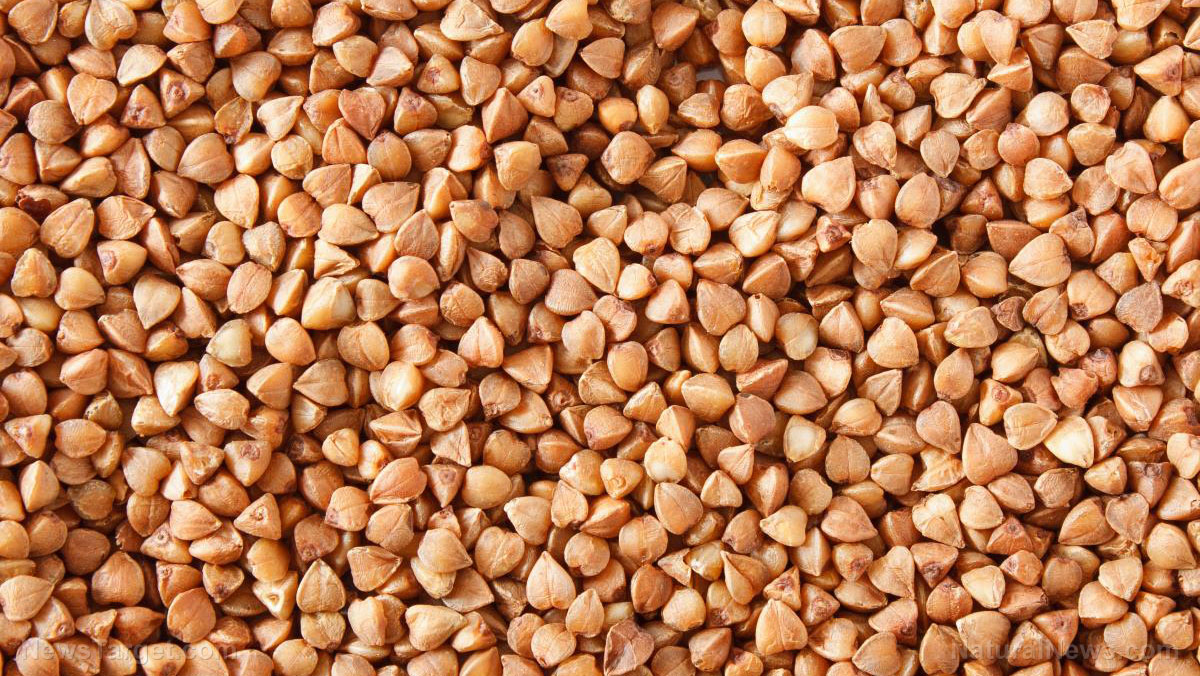
Advertisement
Though its name may suggest otherwise, buckwheat isn’t a kind of wheat. In fact, buckwheat isn’t a grain at all. It’s actually an edible seed that comes from the common buckwheat plant (Fagopyrum esculentum).
Cultivated throughout Asia and in parts of North America, buckwheat is typically referred to as a pseudocereal. Pseudocereals are seeds that are consumed as cereal grains but don’t grow on grasses like actual grains. As such, buckwheat is gluten-free.
Buckwheat is also rich in protein, fiber, vitamins and minerals, leading many people to consider it a superfood. As a versatile ingredient, buckwheat can be used for a variety of culinary purposes. But it’s commonly added to noodles and used in breakfast foods like porridge and pancakes. It can even be used in baked goods.
The impressive benefits of buckwheat
Here’s the scoop on four of the most impressive health benefits of buckwheat:
1. Boosts heart health
Buckwheat contains many heart-healthy nutrients, such as magnesium, copper and fiber. Magnesium plays an important role in regulating muscle contraction. In particular, it helps your heart muscle cells relax by countering calcium, which stimulates contractions.
Copper, on the other hand, helps regulate your heart rate and reduce blood pressure. Meanwhile, soluble fiber, a type of fiber often found in whole grains, helps lower low-density lipoprotein (LDL) or “bad” cholesterol levels. LDL cholesterol is called bad cholesterol because it can build up in the walls of your arteries, increasing your risk of a heart attack or stroke.
2. Improves digestion
Buckwheat also contains insoluble fiber, a type of fiber that the body can’t digest. It attracts water to stool instead, making it easier to pass.
Most of the insoluble fiber in buckwheat is located in the husk, which coats the groats. This husk contains resistant starches, which are resistant to digestion and function similarly to insoluble fiber.
Resistant starches are fermented by good gut bacteria in your colon. As a result, they produce short-chain fatty acids (SCFAs), which serve as nutrition for the cells lining your colon.
3. Aids in weight management
Buckwheat is low in calories and high in fiber and protein. This powerful combination helps curb your appetite by keeping you full for longer. Additionally, this combo helps in regulating blood sugar. Having low or high blood sugar levels can lead to cravings and hunger pangs.
4. Aids in diabetes management
Buckwheat may greatly benefit people with diabetes, a condition marked by high blood sugar. That’s because it is a rich source of complex carbohydrates, which take longer to digest than simple carbohydrates. Slower digestion of carbohydrates keeps your blood sugar levels stable for longer.
How to cook buckwheat
When cooked, buckwheat has a nutty, almost toasted flavor and a soft texture. It pairs well with rich foods like wild mushrooms, tangy cheeses and winter fruits. You can buy buckwheat seeds, also known as groats, in health food stores. Buckwheat flour is also available in stores for making pancakes and baked goods.
Ingredients for 3 servings:
- 1 1/2 cups water
- 1 cup buckwheat groats
- 2 Tablespoons unsalted butter
- 1/2 teaspoon salt
Preparation:
- Place the groats in a fine-mesh strainer. Rinse under cool running water until the water runs clear. Drain well.
- To a saucepan, add the water, butter and salt. Bring to a boil over high heat.
- Add the buckwheat to the saucepan and cover it. Reduce the heat to low and bring to a gentle simmer.
- Cook for 15 minutes or until all the water is absorbed.
- Remove from heat and rest, covered, for 10 minutes. Fluff with a fork and serve.
Recipe for simple buckwheat salad
If you’re looking for a healthy and filling gluten-free dish, try this tasty buckwheat salad. It’s loaded with many vitamins and minerals and can be enjoyed for breakfast or lunch.
Ingredients for 2 servings:
- 4–5 sprigs of flat-leaf parsley, finely chopped
- 1 yellow pepper, roughly chopped
- 1/2 English cucumber, roughly chopped
- 1 1/2 cups water
- 3/4 cup buckwheat groats
- 1 Tablespoon extra-virgin olive oil
- 1 teaspoon salt
- Pinch of ground black pepper
Preparation:
- Rinse the buckwheat groats. Place them in a saucepan along with water and salt. Bring to a boil.
- Reduce the heat to low-medium and simmer for 10 to 15 minutes.
- Add the yellow pepper, cucumber and parsley to a bowl. Add the olive oil, black pepper and salt to taste.
- Add the cooked buckwheat to the bowl with the vegetables. Serve warm or cold.
Buckwheat is a gluten-free, nutrient-rich “grain” linked to many health benefits, such as better digestion and weight loss. Incorporate buckwheat into your daily routine to reap its benefits.
Sources:
Advertisements







